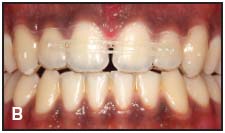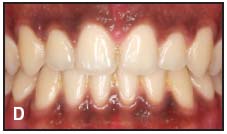Cephalometrics has been the diagnostic workhorse of the orthodontic profession since shortly after World War II. Early orthodontic diagnosis had consisted primarily of the analysis of clinical findings and data gathered from diagnostic models. The main drawback of that method was the inability to see what was going on inside the mouth when the patient closed and, even more difficult to determine, what was going on within the underlying skeleton. Although diagnostic models allowed the doctor to view the occlusion from all aspects, the precise skeletal relationships remained a matter of conjecture. But in the last half of the 20th century, the routine application of cephalometric analyses developed by Bolton, Broadbent, Jarabak, Steiner, and others allowed clinicians to study facial growth and treatment outcomes in minute detail. This led to significant advances in both the fundamental science and the day-to-day practice of orthodontics and dentofacial orthopedics.
Since the introduction of cephalometric analysis, its greatest shortcoming has been the same problem faced by cartographers throughout the ages: the projection of three-dimensional structures, such as geographical features or craniofacial anatomy, into two-dimensional representations, such as maps or cephalograms. We have always had to split the difference between bilateral anatomical points such as gonion and orbitale, and we were often left wondering whether variations between the right and left sides were due simply to radiographic projection artifacts or to true asymmetries.
Similar articles from the archive:
Now, things have changed. The adaptation of conebeam computed tomography (CBCT) to orthodontics during the last decade has opened the door to more accurate diagnoses of such anatomical problems as impacted teeth and facial asymmetries. Like the early literature on conventional 2D radiography, however, the early papers and books on 3D CBCT have been largely exploratory in nature, describing the technological aspects, practical uses, and clinical potential of this relatively new system. We have all been waiting for an easily applicable 3D cephalometric system analogous to the early 2D analyses--a single, comprehensive measurement scheme that would allow comparisons between individual patients and accepted, standardized norms, as well as for the same patient at different points in time, so that the effects of growth and treatment could be quantitatively analyzed. In short, we have been waiting for an analysis that would do for 3D cephalometry what the Steiner analysis did for 2D cephalometry.
In this issue of JCO, Dr. Heon Jae Cho of the Department of Orthodontics at the University of the Pacific presents just such a system. What will undoubtedly come to be known as the Cho analysis is a thorough, integrated method of evaluating the craniofacial skeleton in all three planes of space, including intermaxillary measurements and vertical, sagittal, and transverse dental measurements. The analysis Dr. Cho describes, based on the 3D volumetric images of one female subject with a Class I malocclusion, is both direct and easily mastered. Using this system, the profession will now be able to develop age-, race-, and gender-specific population norms. This should provide fodder for departmental and resident research projects for years to come. In addition, we are eagerly anticipating the publication of case reports using the Cho analysis in JCO in the near future.
Where do we go from here? As Dr. Ronald Redmond points out in his introduction to Dr. Cho's Cutting Edge article, a 3D analysis is best appreciated, if not in person, then in video format. I can envision the day when all cephalometric patient records will be stored in digital video, so that the full volumetric analyses can be viewed and shared for consultation and research. The next step after that, of course, would be holographic projection with time-lapse coordination--providing a true 4D analysis that could integrate the all-important dimension of time more completely into our diagnostic and treatment-planning procedures. What an exciting time to be an orthodontist!
RGK







